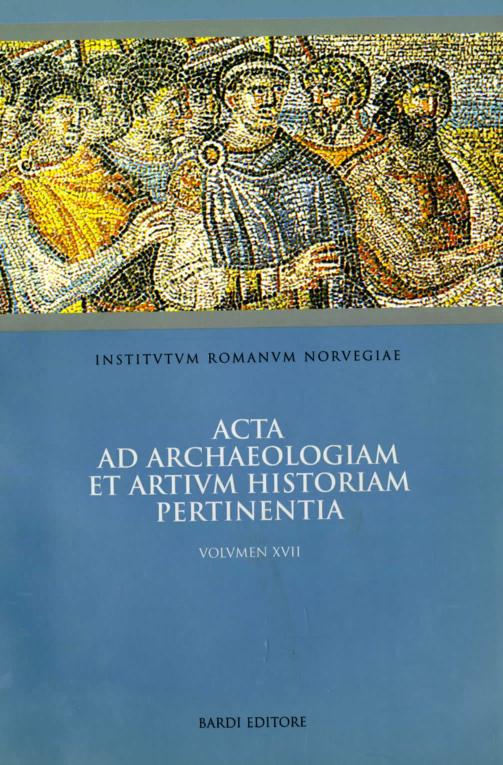"Circus Basilicas", "coemeteria subteglata" and church buildings in the suburbium of Rome
DOI:
https://doi.org/10.5617/acta.5690Abstract
Symbolic interpretations of ancient architectural forms have often been based solely on the study of their ground plans. Even today, archaeological research too seldom takes into account the fact that it is not possible to understand ancient architecture by studying ground plans alone, but that it is even more important to interpret and try to complete the surviving remains of the building in elevation, even though these are often poorly preserved. The ancient observer himself did not primarily take notice of the ground plan. The fact that this focus on ground plans can sometimes lead to serious misunderstandings and erroneous conclusions may be demonstrated by the example of the so-called Circus Basilicas in the suburbium of late antique Rome. It will be here shown, that these hall buildings can neither architecturally nor ideologically be connected with the circus. With the first comparative analysis of important (but often misunderstood) literary and epigraphic sources, the function of these halls will also be examined: it is not primarily a matter of roofed cemeteries (coemeteria subteglata), but of church-buildings, within which funerals may have taken place – as was possible also in other extra urban basilicas, for example, St. Peter’s.
How to Cite
Issue
Section
License

This work is licensed under a Creative Commons Attribution-NonCommercial 4.0 International License.
Authors who publish with this journal agree to the following terms:
- Authors retain copyright and grant the journal right of first publication with the work simultaneously licensed under a Creative Commons Attribution License that allows others to share the work with an acknowledgment of the work's authorship and initial publication in this journal.
- Authors are able to enter into separate, additional contractual arrangements for the non-exclusive distribution of the journal's published version of the work (e.g., post it to an institutional repository or publish it in a book), with an acknowledgement of its initial publication in this journal.
- Authors are permitted and encouraged to post their work online (e.g., in institutional repositories or on their website) prior to and during the submission process, as it can lead to productive exchanges, as well as earlier and greater citation of published work (See The Effect of Open Access).





